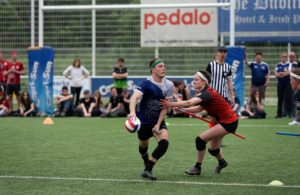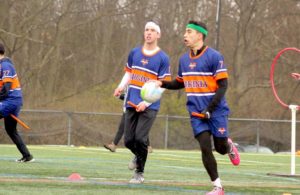- Rule, Britannia, no more?
- Unpopular Opinions: US Quadball Cup 2023
- Proven Contenders: University of Virginia
- Proven Contenders: Rutgers University
- Proven Contenders: University of Michigan
- Proven Contenders: Creighton University
- Different Perspectives: A Look Inside USA Ultimate
- Antwerp QC, Much of Belgian Core, Leaves Competitive Quidditch
Pick a Side: The Mid-Atlantic
With a new season upon us, the staff of The Eighth Man got together and identified key storylines in each region. Staffers then were assigned a side in favor or against each statement. This is the fourth installment in our Pick a Side series: the Mid-Atlantic.
District of Columbia Quidditch Club is an Elite Team
Against: Ricky Nelson – Mid-Atlantic Correspondent
District of Columbia Quidditch Club–far from a Sweet-16 finisher–is going to be a mess this season. They have a sizable recruitment class from low- to mid-tier Mid-Atlantic teams but– once again–they are failing to recruit top talent from the strongest programs in the region.
A few lucky snags like Bernardo Berges have kept DCQC from suffering unduly from roster losses like Max Miceli–who played unofficially for the team at a recent tournament–and James Hicks, but there is a major hole on the team that DCQC has failed to fill: beaters.
In fact, the team looks much like the Washington Admirals team from this year’s MLQ season, sans the University of Maryland components. Those components came with a modicum of drama but more than made up for it by providing a solid beater corps. However, even with those players, the Admirals only managed to score one win at the 2016 MLQ Championship, an unimpressive record by any count.
With beaters in short supply, DCQC’s top option so far is Robby May with repurposed chasers and keepers as backups. This means first-year coach Erin Mallory will be tasked to retrain players for a position that she has minimal experience playing. She will have to either trust the few beaters she has to come up with their own strategy or push original ideas that will be tested in a whirlwind of competitions with little time to adjust before the Mid-Atlantic Regional Championship.
DCQC will have no trouble earning their bid to US Quidditch Cup 10, but the competition at beater becomes too fierce at the national level. The lack of strong beating will hurt the team on offense and defense–even if Mallory manages to make use of every player on the pitch–making it hard to pull out of range in easy games and stay in range in hard games.
Worse yet, the team will be crushed when it comes to seeker play. Having lost their primary seeker Darren Creary, DCQC will have to give less-experienced seekers a shot at the snitch with little cover from beaters.
SWIM games will probably the biggest barrier between the squad and another Sweet-16 run. With so much uncertainty in how this season will play out, there are too many teams who might be good enough to make it that far, but it will be a close thing in each of those matches. As much as SWIM was derided for its weight in the standings algorithm back in the day, it will show its value with teams like DCQC.
I hope this team turns around and beats my prediction but–unlike with college teams where you may find some untapped talent in a player–most community team players know their strengths and weaknesses. DCQC will have to try to recruit hard to fill the holes at beater and seeker so as not to take away from what should be a fairly solid quaffle line.
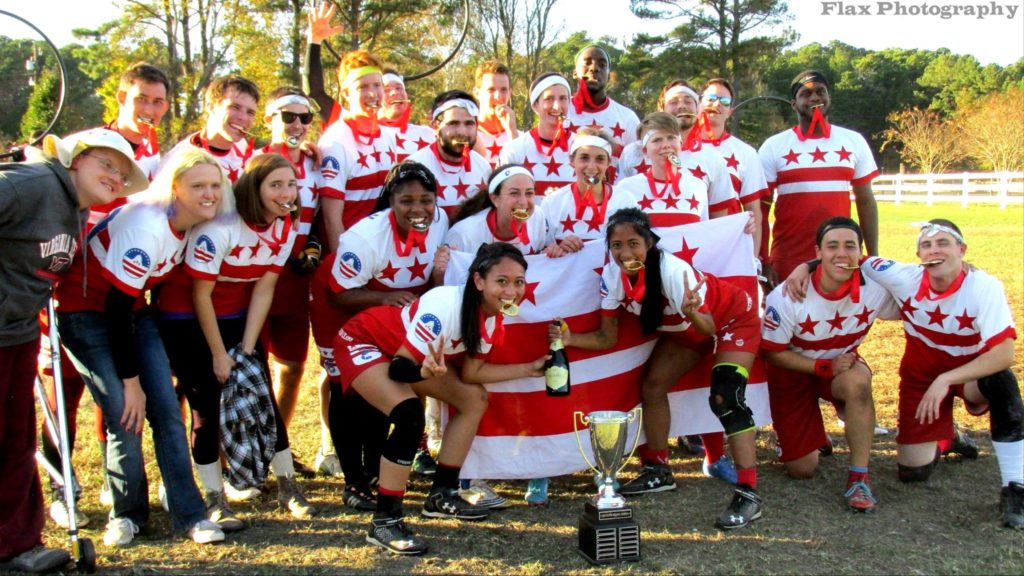
Credit: Flax Photography
For: Michael Parada – Northeast and Mid-Atlantic Correspondent
This early in the season, DCQC is still a Sweet-16 contender and here’s why: This team is bringing in and returning a lot of experienced and skilled players. They’re going to start the year off stronger than most colleges and will continue to improve and fit pieces together from various teams as the season progresses.
DCQC boasts impact players like Team USA member and University of Miami captain Berges, George Mason University captain Ben Mertens and University of Virginia captain Erik Morlock. Additionally, former Virginia beater Anna Leonard will make a reappearance into USQ play. Justin Barnard broke onto the scene this MLQ season for the Washington Admirals and–with a whole USQ season of development–could become a name outside of the Mid-Atlantic playing for DCQC. Having former regional champions Katryna Hicks and Mallory at the helm of this team adds a strong, level-headed base of experience. Another thing to watch out for is during the spring season the team could add more firepower just like they did last season with the likes of Mallory, Patrick Rardin and Jimmy Pritts.
Add in the huge fact that 11 members from the 30-person Washington Admirals roster will be joining this team, and DCQC has a lot of potential. Rochester Whiteout and Indianapolis Intensity powered the success of Rochester United and Ball State University, respectively, showing USQ teams with a core from MLQ teams are able to transition the play from the summer into success the following USQ season. Combine that with the current down year of top teams across the country, and DCQC could easily take a good pool from their solid overall record, beat a lower-seeded team in the Round of 32 and make it to the Sweet 16.
This is going to be a team that will have solid chasers with tons of experience and–if they round out the squad during winter recruitment or bring some players out of retirement like they did last season–they will once again make noise at the US Quidditch Cup. DCQC still sits on the bubble of national contention and there is a lot to suggest they will take steps forward this year. Whether that will be enough to push them to another round in bracket play remains to be seen.
University of Maryland Will Win the Mid-Atlantic Regional Championship
Against: Jayke Archibald – Northeast Correspondent
While Maryland will be an improved team heading into 2016, they still will not win the Mid-Atlantic Regional Championship.The team benefitted from a number of returning players joining the Admirals this summer, but most of that benefit comes from not having had an offseason, as opposed to the player development and growth seen in other MLQ franchises.
The Admirals offense does not lend many strategic advancements to Maryland, as it did not play to the Terrapin’s strengths: quick cuts and open chasers in and around the hoops. Central to Maryland’s success will be keeper Brenden Hutton, who so far has showcased a cannon of an arm for both shooting and passing but not the consistent accuracy desired for someone who will be the main ball handler and distributor. While he will have many passing options, thus far he has not demonstrated that he can make the correct decisions or necessary passes on a regular enough basis to allow the offense to reach its full potential.
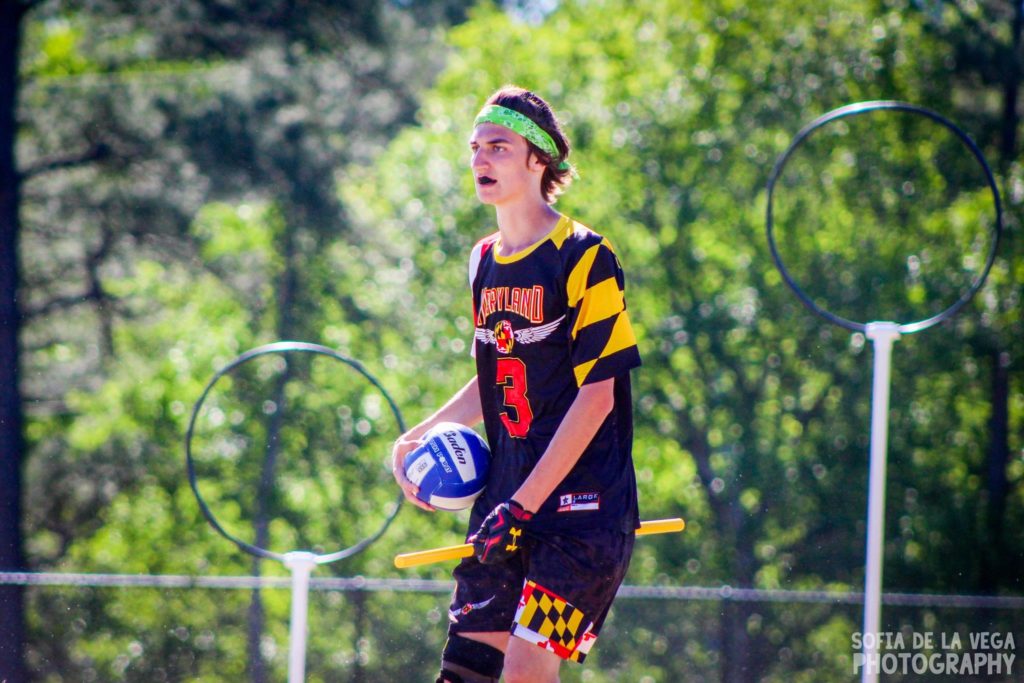
Credit: Sofia de la Vega
On the other side, the defense is anchored by beaters Jeremy Dehn and Mike Madonna who–while both skilled–have a penchant for recklessness. Madonna is a card magnet and lets his temper dictate his play; smarter beaters will let him beat himself and take advantage. Dehn has a fantastic arm yet settles for long beats more often than necessary, relinquishing control and knee-capping his defense. I don’t see these tendencies being fixed by the Mid-Atlantic Regional Championship–if at all this season.
Maryland will most likely remain the top college program in the region, but these weaknesses will allow teams they should beat to stay in range, where anything can happen. Furthermore, teams with more experienced players (see: DCQC and The Warriors) will be more prepared and better suited to adapt and counter Maryland’s style and should dispatch them when it matters most.
For: Ethan Sturm – Managerial Editor
The Mid-Atlantic region has always belonged to Maryland. Not only have they won two of the four regional titles, but they’ve been the best team in the region for most of that time. Last season, the program had to deal with rebuilding after losing its first major graduating class but this year, the Terrapins enter the season in full stride ready to take back a title they have never stopped believing belongs to them.
After graduating that first class, it was a slow start for the program in the 2015-16 season, in part because the team avoided MLQ in the summer of 2015 while rivals like DCQC benefitted from involvement. That changed in 2016, and key returners like Hutton, Dehn, Madonna and Eric King all took part. This should change the fall dynamic in Maryland and also offer some upper echelon talent that was far more undefined a year ago.
While Hutton will provide important contributions as the team’s primary ball handler, talented quaffle players has never been Maryland’s shortcoming. Instead, it will be the contributions of Dehn and Madonna that should put the Terrapins in the driver’s seat of the region as–for the first time ever–Maryland has the best beaters in the Mid-Atlantic.
In part, this is a result of convenient timing. Scott Axel, who was at the heart of Penn State University’s upset of Maryland at the Mid-Atlantic Regional Championship last year, has graduated and Kyle Bullins of UNC will be abroad for the fall. But, it’s also a credit to the pair’s development, with Dehn and Madonna each developing a unique style that allows them to excel in different matchups. Dehn is a consistent force, but when he struggles, Madonna often excels, as he did against the New York Titans in their MLQ series.
It isn’t just that the beater pair is the best in the region; it’s that the competition for that distinction is minimal. Rutgers University has yes to develop an above average talent at the position; UNC and Penn State both have massive holes to fill; DCQC’s beater corps are all but anonymous; and The Warriors are relying on Michael Sanders, who last played competitively at the Northeast Regional Championship exactly two years ago. When you add that beater advantage to the most athletic, well-conditioned chaser group in the region, you can bet the Terrapins are going to put a lot of teams out of range.
Maryland is often accused of arrogance, but in truth, it is a confidence that they are the best team on a pitch at any time. It’s that confidence that has pushed the program so far and that has kept its recruiting classes strong, its conditioning top notch and its name in the conversation nationally when so many school teams have fallen off. And it’s that confidence–and a plethora of talent–that will have them taking back the Mid-Atlantic title for a third time in November.
Mid-Atlantic Will Have the Most Nationally Competitive College Teams
Against: Tad Walters – Southwest Correspondent
With the new university team policies in place, the collegiate landscape will be redefined this year. Veterans who are not attending universities are forced to retire, coach or join a community team, leaving the college scene a battle of who can retain and recruit the most talented players.
While at the top, the Mid-Atlantic boasts storied programs like Maryland and UNC, it’s unlikely that any college team outside of these two will be competitive on the national stage. Rutgers has had a history of being remarkably inconsistent, while George Mason and Penn State don’t have the experience or talent to bring them to anything more than a lucky Sweet-16 run at nationals this season. All of these teams will have to reevaluate how they develop new talent and will have to put more effort into understanding the game on a higher level to be competitive on the main stage.
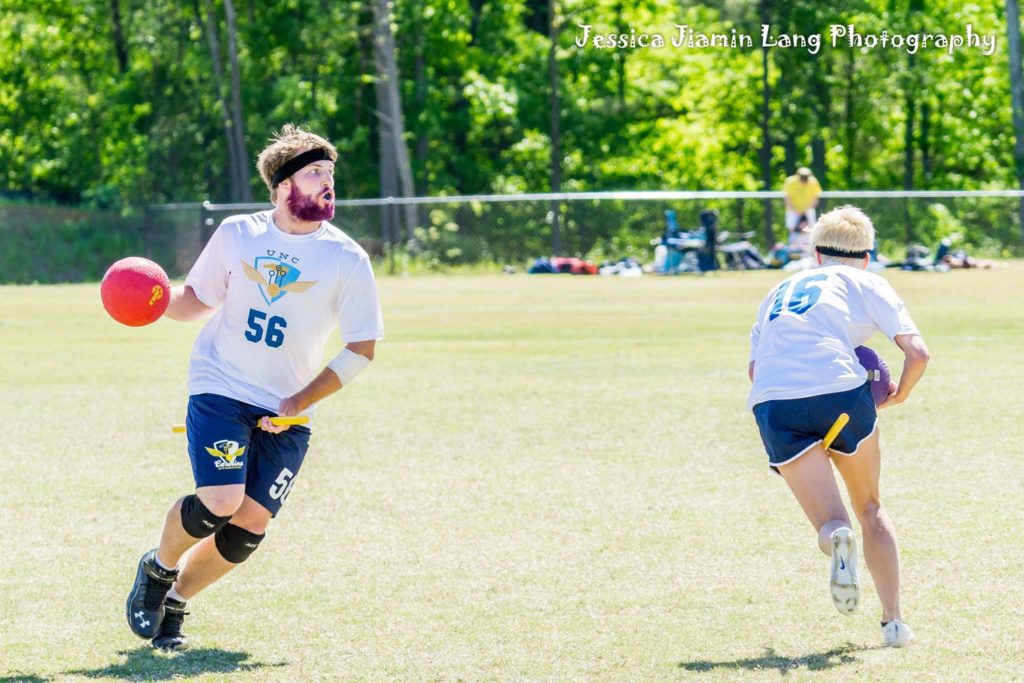
Credit: Jessica Jiamin Lang
Maryland will probably be the Mid-Atlantic team with the deepest run, as they arguably lost the least amount of talent of the aforementioned teams. Anchored by a strong beater corps and great mid-range shooters, this Maryland team will have no problem scoring. UNC will be hurting in the fall from star beater Bullins studying abroad and will have to play their regional without him, not to mention reintegrate him into the offense come spring. The rest of the Mid-Atlantic needs to look to Maryland and UNC as models for being successful collegiate programs if they hope to be competitive at nationals this season.
For: Tyler Walker – Managerial Editor
At US Quidditch Cup 9, the Mid-Atlantic and Southwest tied for the most college teams in bracket play with six college teams a piece. I believe seven programs in the Mid-Atlantic have the ability to make waves nationally next season. The Mid-Atlantic will boast the most nationally competitive college teams at US Quidditch Cup 9.
Maryland comes in as the top team in the region. Last year was a rebuilding year for the program. The loss of the most versatile player in the game–Harry Greenhouse–and one of the top female players in the nation–Mallory–caused problems, but the team was still able to find national success, only losing games to eventual semifinalists Ball State University and Lone Star Quidditch Club. The summer will prove huge for the Terrapins, as Admirals beater combo and returners Dehn and Madonna spent the MLQ season polishing their skills and chemistry. There are few teams–let alone college teams–who can match the type of beater play they will be able to consistently bring to the pitch. Look for Maryland to develop into one of the top teams in the country, college or not.
Penn State took the most hits in the offseason. Losing most of the core that willed the team to the Sweet 16 last year, those losses will take some time to fix and rebuild. We have seen large holes in the roster hurt quidditch programs like the 2015-16 rendition of Emerson College. This, more than likely, will be a rebuilding year for Penn State.
However, you rarely see large state schools with established programs fall too hard during rebuilding years. Ohio State, for instance, still managed to finish in the final four at regionals during its rebuilding year last season. Texas is always able to put themselves into the national spotlight despite losses each season. With a large state school and the possibility of great recruitment, you have to take rebuilding with a grain of salt.
The same can be said for UNC who lost to Penn State at US Quidditch Cup 9 in bracket play. The Tar Heels have suffered some player losses but should still remain competitive against the top in the country. It just may come later in the season than they are used too. A big school with reportedly solid recruitement, look for Lee Hodge and rest of the Tar Heels to take steps forward from last year. They will miss the beating of Bullins in the fall but his spring awakening will push UNC into the national conversation. And, in his absence, other players will be forced to step up into the role of starting beater.
Last year, Rutgers was the only team below Pod Two to win their pool. Though they showed brilliance on day one, they repeated their tradition on day two of tournaments: they choked. With a large returning class and another summer spent playing MLQ, Rutgers should pick back up as a top team in the region. Getting speedster beater Devin Lee experience in MLQ will pay off in the USQ season as he transitions from consistently playing the likes of Kyle Jeon at practice and Mario Nasta and Max Havlin in games to competing in a region with arguably lesser-skilled beaters. That experience for someone who fits into the prototype the beater position is turning into. Along with boasting one of the top chasers in the sport–Lindsay Marella–Rutgers will be able to create mismatches on pitch that teams will struggle to contend with. This team will be terrifying if they can learn to transition their game between Saturday and Sunday.
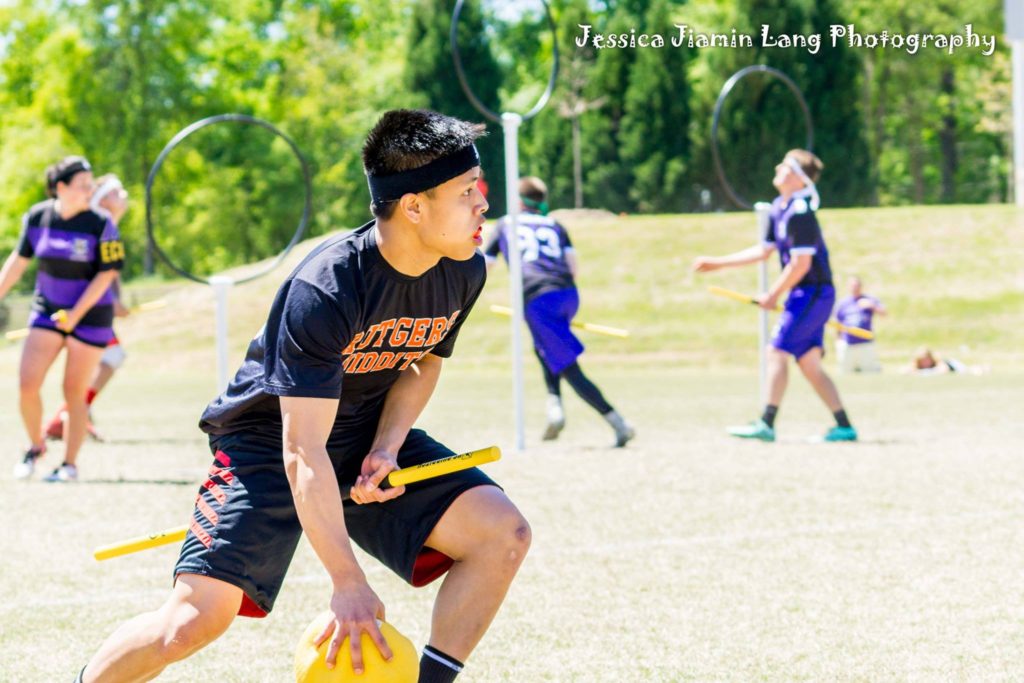
Credit: Jessica Jiamin Lang
While Rutgers made waves, they were nothing compared to what George Mason did last year. Under the tutelage of “Apple Training,” George Mason was able to beat Texas State University and Tufts University–both of which were ranked in The Eighth Man Top 10 entering nationals. The team will continue the same training regimen this season and that type of work ethic should help George Mason continue the trend of upsetting national contenders.
The rest of the Mid-Atlantic colleges have a lot of potential–Virginia and University of Richmond in particular–though each team needs another piece or more to step into the national spotlight. Still, there is no other region that can claim to have seven colleges who will be able to contend with teams across the country. By the time April rolls around, expect to see the Mid-Atlantic be the most represented region again.

